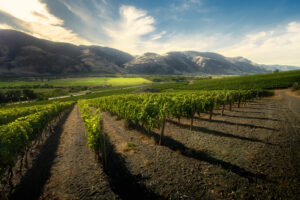We’re adding our own twist on a holiday classic. Starting December 13, 2020, our Master Winemaker Howard Soon will be sharing fun facts and tips about our wines, vineyard, and things every connoisseur or novel wine sipper should know. To learn more and follow along our 12 Days of Vanessa Vineyard, connect with us here, Instagram, Facebook and Twitter.
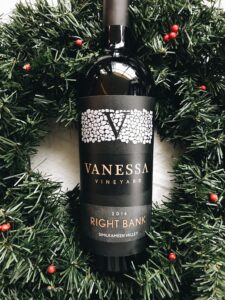
Day 1
Sometimes there can be too much of a good thing!
Grape vines do not like their feet to be wet. Therefore, controlling the vineyard’s water filtration system is key to managing the ripening of the grapes.
At Vanessa Vineyard, we use both sprinklers and a drip irrigation system to get the right amount of water to the grape vines for optimal ripening – not too slow, not too quick, just right.
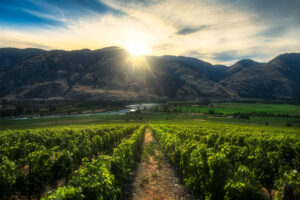
Day 2
Prior to becoming Vanessa Vineyard, the land was formerly very rocky.
After some time (and very big bulldozers), the smooth rolling hills of the vineyard were unveiled creating this incredible view of the Similkameen Valley.
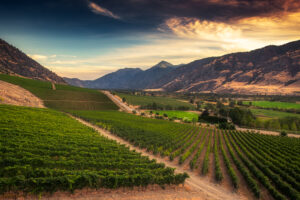
Day 3
Rose is made from red grapes, not a mix of red and white!
The wine is fairly tinted from the grape skins and what we’re left with is a beautiful pink hue – the kind of colour that summer dreams are made of.
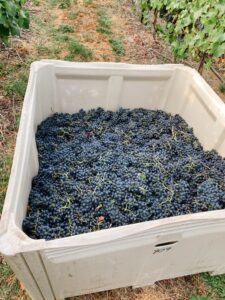
Day 4
Our red wines are in their barrels for two years before they get bottled and age in the bottle for another two years.
That’s four years total from a time a wine is created to when it’s released to the public.
The secret? We bottle just before we should we should. We taste and take a leap of faith knowing once the wine gets bottled, the magic begins.
Chemistry can be sexy. And delicious.
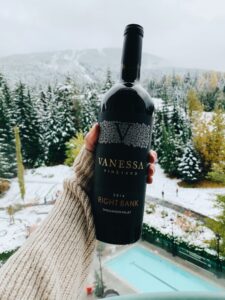
Day 5
Many of us know the shape of a wine glass matters depending on what we’re drinking.
But what about the shape matters?
Companies like Riedel have gone through great lengths of research and design iterations to achieve just the right angle at which a wine reaches your palate to ensure you’re getting the best flavour every sip of the way.

Day 6
There are 23 staves in a wine barrel.
The key to creating a wine barrel is using heat to bend the staves without them breaking with the help of metal hoops to hold the shape.
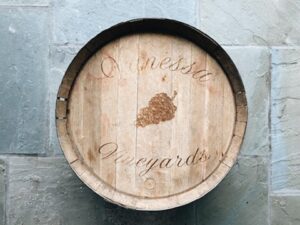
Day 7
Similar to your toaster at home where you can choose light, medium or dark, you can choose the same for your oak barrels!
At Vanessa Vineyard, we use oak barrels made out of either American or French Oak and lean towards medium or medium-plus toast.
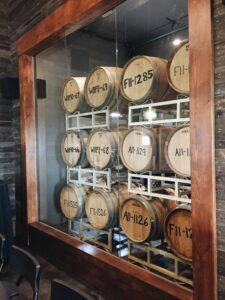
Day 8
You can find a lot of wildlife on Vanessa Vineyard property.
Some of our more popular visitors including:
- rattlesnakes
- black bears
- mule deer
- robins
One year, a black bear enjoyed a good row or two of syrah grapes.
Talk about great taste!
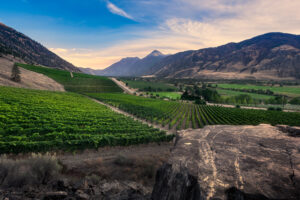
Day 9
What’s the proper way to pronounce Meritage?
Like heritage!
The word “meritage” was created by combining the words “merit” and “heritage”. “Merit” was chosen to reflect the quality of the grapes while “heritage” was chosen to recognize the centuries-old blending process that was involved in making the wine from Bordeaux varieties.
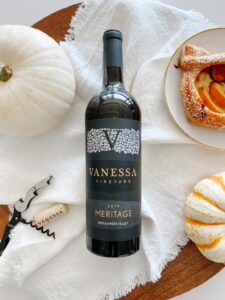
Day 10
When the vineyard was landscaped, the big question was where to put all of the crushed rocks.
Master Winemaker Howard Soon advised that we should place the rocks on the ground where the grape vines were growing. He knew that by doing so, the heat absorbed from the day would be imparted through the vines on cooler nights, aiding in the ripening process resulting in intensely ripe fruit with flavours and minerality that are truly distinctive.
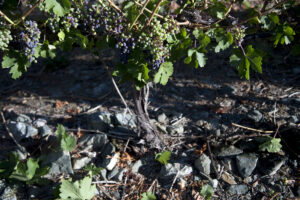
Day 11
Sugars in wine come from grapes, yes. But a lot of the sugar in wine is from the grape vine leaves!
Through growing season, our site manager Nathan Goltz along with Master Winemaker Howard Soon pay very close attention to the grapes and their leaves to ensure the grapes ripen properly with the right flavours.
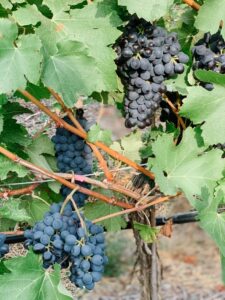
Day 12
What lives between the rows of grape vines is just as important as the grape vines themselves.
Known as the cover crops, often you will find grass or other crop plants growing between rows of grape vines. It is important to care for cover crops as it prevents erosion, improves biodiversity, and contributes to overall soil structure.
